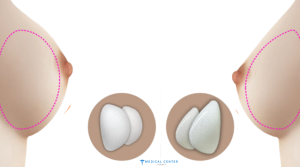Breast Augmentation in 2025
Breast Augmentation in 2025 is an article that aims to give you all the information you do not know about Breast Augmentation in 2025 and more. We kindly shared the main headings with you;
What are the latest advancements in breast augmentation techniques in 2025?
In 2025, breast augmentation techniques have evolved significantly, focusing on both aesthetics and patient safety. One of the most prominent advancements is the use of minimally invasive techniques, including endoscopic surgery, which allows surgeons to make smaller incisions, reducing scarring and recovery time. Additionally, there has been an increase in 3D imaging technology, which enables patients to visualize the expected results of their breast augmentation before the surgery. This helps ensure more accurate and personalized outcomes.
Fat grafting, a method where fat is liposuctioned from one part of the body and transferred to the breasts, continues to grow in popularity. It’s seen as a natural alternative to implants, offering softer and more subtle results. The technique is being refined further with advancements in stem cell technology, improving the survival rate of the transferred fat cells and enhancing the overall result.
Another key development is the use of composite breast augmentation, which combines implants with fat grafting. This technique allows patients to enjoy the benefits of both volume enhancement and a more natural appearance, particularly at the upper pole of the breast.
Lastly, there’s a growing focus on patient-centered care with more customizable procedures. Surgeons now use advanced simulation tools to map out the best implant type, size, and placement based on the patient’s anatomy and desired look, ensuring a more precise and satisfactory result.
Are there new implant materials or technologies available this year?
Yes, 2025 brings exciting advancements in implant materials and technologies. One of the most notable is the development of gummy bear implants (form-stable silicone implants), which have become more refined. These implants retain their shape even if ruptured, making them much safer and more reliable than earlier models. The consistency of the gel inside these implants has improved, offering a more natural feel and texture, closely mimicking natural breast tissue.
Smooth and textured implants have seen improvements, with textured implants being engineered to reduce the risk of a rare complication known as anaplastic large cell lymphoma (ALCL). Surgeons now have more access to high-quality implants that reduce complications like capsular contracture and implant rupture. The advent of biocompatible materials has also improved the integration of the implant into the body, reducing the risk of complications.
Another innovation is the development of implantable tissue expanders that provide a more controlled and gradual approach to achieving the desired breast size. This allows for greater customization during the augmentation process. Additionally, nano-textured implants are gaining traction as they offer a balance between the smooth and textured types, providing both aesthetic appeal and reduced risk of complications.
How safe is breast augmentation surgery in 2025 compared to previous years?
Breast augmentation surgery in 2025 is safer than ever, thanks to advances in surgical techniques, implant materials, and post-operative care. Modern implants, particularly gummy bear implants, have a much lower risk of rupture and complications, offering a higher level of safety than the older generation of silicone and saline implants.
The development of minimally invasive surgery techniques and the use of endoscopic cameras to perform surgery through smaller incisions has significantly reduced scarring, infection risks, and recovery times. Surgeons can now achieve more precise placements of implants with less trauma to the surrounding tissue, enhancing safety during and after surgery.
In addition, anesthesia techniques have improved, providing patients with better pain management during and after the procedure. The use of local anesthesia combined with sedation, rather than general anesthesia, is becoming more common, reducing the risks associated with anesthesia-related complications.
Surgeons are also more skilled in patient-specific planning, utilizing advanced imaging and simulation tools to determine the optimal type, size, and placement of implants, ensuring more predictable outcomes. With enhanced post-operative care protocols, such as faster healing strategies and better wound management, the risks associated with breast augmentation have been minimized.
You can contact us if you want to get more detailed information about our packages related to this treatment. Just click on the link below.
What is the average recovery time for breast augmentation in 2025?
Recovery time for breast augmentation in 2025 has been significantly reduced thanks to improvements in surgical techniques, implant materials, and aftercare procedures. On average, the recovery timeline looks like this:
- First 3-5 Days: After surgery, patients will experience some swelling, bruising, and discomfort. Most patients can expect to return home the same day or after a short hospital stay. Pain is typically manageable with prescription medications.
- 1 Week: At this stage, most patients can resume light daily activities, but it’s still essential to avoid heavy lifting or any activities that strain the chest muscles. Some swelling and tightness may persist, but this should gradually subside.
- 2-3 Weeks: Many patients can return to work within 7-10 days, especially if their job does not involve heavy physical activity. Light exercises, such as walking, can be resumed, but strenuous workouts or lifting heavy objects should be avoided.
- 4-6 Weeks: By the fourth week, most swelling will have gone down, and patients will feel more comfortable resuming moderate physical activities. High-impact exercises, like running or weightlifting, should still be avoided.
- 3-6 Months: Full recovery can take several months. During this time, implants will settle into their final position, and any residual swelling will completely disappear. The results of the surgery will become more apparent as the breasts soften and take their natural shape.
Advancements in pain management, such as the use of long-acting local anesthesia and post-operative compression garments, have contributed to a quicker, more comfortable recovery process. Many patients are also opting for virtual consultations with their surgeons during the recovery period, ensuring that the healing process is on track.
Are there non-surgical alternatives to breast augmentation in 2025?
Yes, there are a few non-surgical alternatives to breast augmentation in 2025, providing patients with options if they wish to avoid traditional surgery. These methods offer a less invasive approach, although the results are typically not as dramatic or permanent as surgical breast augmentation:
- Fat Grafting: Also known as lipofilling, this technique involves liposuction to remove fat from one area of the body (such as the abdomen or thighs), which is then purified and injected into the breasts. This method provides a natural and subtle enhancement, although it may not offer the same level of size increase as implants.
- Breast Filler Injections: For patients seeking a temporary enhancement, hyaluronic acid-based fillers are sometimes injected into the breasts. This procedure is less invasive and can be completed in a short time, though the results are temporary and require re-treatment after 6-12 months.
- Vacuum Therapy or Breast Suction Devices: Non-surgical methods like breast pumps or suction devices are marketed as ways to increase breast size naturally. While they can improve circulation and temporarily increase breast volume, their effectiveness in providing long-term size changes is limited.
- Ultrasound and Radiofrequency Treatments: Techniques like radiofrequency (RF) therapy or ultrasound therapy are being explored as potential non-invasive methods to lift and firm the breast tissue. These methods stimulate collagen production, which may result in a firmer appearance, but the effects are typically subtle and temporary.
While these non-surgical options can provide temporary enhancements or slight improvements in appearance, traditional breast augmentation surgery remains the most effective option for significant, long-lasting results.
If you’re looking for the most dramatic, long-lasting transformation, full-body liposuction is the best choice. For those seeking non-invasive alternatives, options like CoolSculpting and laser lipolysis may be better. If you want to get more detailed information about this surgery, just click on the link below. We are always ready to help you.





